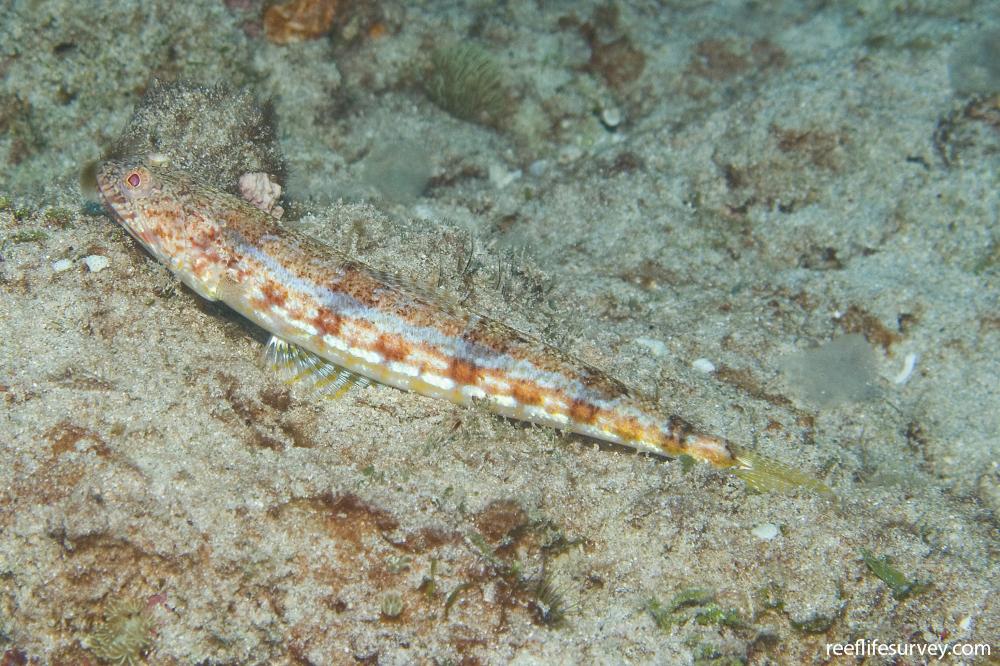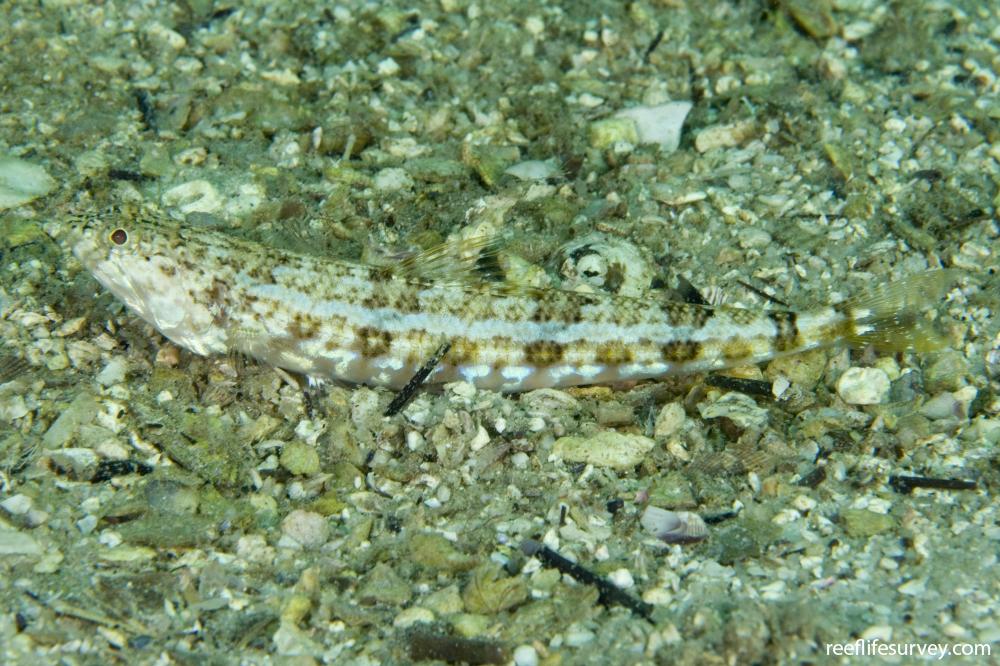Synodus dermatogenys
Two-spot lizardfish | Banded Lizardfish | Clearfin Lizardfish | Grey-streak Lizardfish | Sand LizardfishSimilar Species
Same Genus
Distribution
Temperate Africa, Tropical Indo-Pacific
Description
Light blue stripe down side, starting above pectoral fin and often uninterrupted by dark bars, and lower row of white dashes from behind pectoral fin. Often with yellowish tail. Very similar S. similis also has blue line, but has dark patch on upper rear operculum.
Information
Max Size: 24 cm
Sea Temperature Range: 15.4-31.2°C
Depth: 1-91m
Habitat Generalization Index: 10.74
Also referred to as the SGI (Species Generalisation Index), this describes the habitat niche breadth of the species. Species with values less than 15 are found in a relatively narrow range of reef habitat types (specialists), while those over 25 may be found on most hard substrates within their range (generalists). Learn more here.
Conservation and Rarity
IUCN Status: Not Evaluated
Occurrence: Infrequent (7.3% of sites)
Occurrence describes how often the species is found on surveys within its distribution. It is calculated as the % of reef sites surveyed by RLS divers across all the ecoregions in which the species has been observed
Abundance: Solitary (1 per transect)
Abundance is calculated as the average number of individuals recorded per RLS transect, where present.
Edit by: extract from RD Stuart-Smith, GJ Edgar, AJ Green, IV Shaw. 2015. Tropical Marine Fishes of Australia. Reed New Holland


































